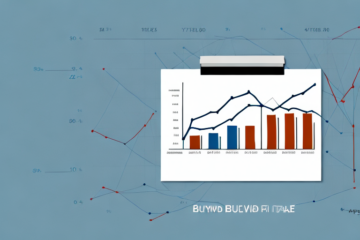What Is a 12B-1 Fee in Finance Terms?
A 12B-1 fee is a type of fee that is charged on certain mutual funds. It is named after the SEC rule that allows mutual funds to use this fee to cover marketing and distribution expenses. These fees are paid by investors in the fund, and typically range from 0.25% to 1% of the fund’s assets per year. In this article, we will explore the history of 12B-1 fees, how they work, the types of funds that charge them, the pros and cons of investing in funds with 12B-1 fees, as well as provide tips on how to minimize their impact on your investment returns.
The History of 12B-1 Fees in the Financial Industry
12B-1 fees were first introduced in 1980 as a way for mutual funds to cover the costs of marketing and distributing their shares to investors. Before then, mutual funds could only charge investors a sales load, which was a one-time fee that was paid when shares were purchased. 12B-1 fees allowed mutual funds to spread that cost out over time, making it easier for investors to invest in these funds. The SEC made 12B-1 fees permanent in 1998, and since then, they have become a common feature of the mutual fund landscape.
However, 12B-1 fees have been a topic of controversy in recent years. Critics argue that these fees can be excessive and eat into investors’ returns. In response, some mutual fund companies have started offering “no-load” funds, which do not charge 12B-1 fees or sales loads. Additionally, the SEC has proposed new rules that would require mutual funds to disclose more information about their fees and expenses, including 12B-1 fees. This increased transparency could help investors make more informed decisions about where to invest their money.
How Do 12B-1 Fees Work?
12B-1 fees are included in the expense ratio of a mutual fund. The expense ratio is the annual cost of owning the fund, expressed as a percentage of the fund’s assets. This ratio includes all of the fund’s expenses, including management fees, administrative expenses, and other costs. The 12B-1 fee is one of these expenses and is used to pay for the marketing and distribution of the fund’s shares.
It is important to note that 12B-1 fees can vary in amount and duration. Some funds may charge a higher 12B-1 fee in the early years of the fund’s existence to help cover the costs of marketing and distribution, while others may charge a lower fee that remains consistent over time. Additionally, some funds may have a sunset provision that reduces or eliminates the 12B-1 fee after a certain period of time.
Investors should carefully consider the impact of 12B-1 fees on their investment returns. While these fees may help to increase the visibility and distribution of a fund, they can also reduce the overall return of the investment. It is important to compare the expense ratios and 12B-1 fees of different funds before making an investment decision.
Types of Funds That Charge 12B-1 Fees
Many mutual funds charge 12B-1 fees, but not all funds do. Typically, funds that charge 12B-1 fees are those that are sold through brokers or financial advisors. These funds may have multiple share classes, each with different expense ratios and fee structures. In general, funds that are sold directly to investors or through discount brokerages are more likely to have lower costs and no 12B-1 fees.
It’s important to note that 12B-1 fees are not the only fees associated with mutual funds. Other fees may include management fees, administrative fees, and redemption fees. These fees can add up and eat into your investment returns over time, so it’s important to carefully review a fund’s prospectus and fee structure before investing.
Some investors may prefer to invest in funds that do not charge 12B-1 fees, as they may feel that these fees are unnecessary and only serve to benefit the financial advisor or broker selling the fund. However, it’s important to consider the overall value that a fund provides, including its performance, investment strategy, and management team, in addition to its fees.
The Pros and Cons of Investing in Funds with 12B-1 Fees
There are both advantages and disadvantages to investing in funds with 12B-1 fees. On the positive side, these fees can help mutual funds cover their marketing and distribution costs, making it easier for investors to gain access to these funds. Additionally, funds with 12B-1 fees may offer more services to investors, such as access to financial advisors and educational materials. However, these fees can also eat into your investment returns over time. In addition, some argue that 12B-1 fees create a conflict of interest for financial advisors, who may be incentivized to recommend funds with higher fees, even if they are not the best choice for the investor.
Another potential disadvantage of investing in funds with 12B-1 fees is that these fees can be difficult to understand and compare across different funds. Unlike expense ratios, which are required to be disclosed in a standardized format, 12B-1 fees can vary in their structure and disclosure. This can make it challenging for investors to make informed decisions about which funds to invest in.
On the other hand, some argue that 12B-1 fees can actually benefit investors by incentivizing fund managers to focus on long-term performance rather than short-term gains. By providing a steady stream of income to cover marketing and distribution costs, fund managers may be less likely to engage in risky or speculative investments in order to generate quick returns. This could ultimately lead to better long-term performance for investors.
Understanding the Different Classes of Mutual Fund Shares
As mentioned earlier, many mutual funds have different share classes, each with different fees and structures. The most common types of share classes are A, B, and C shares. A shares typically have higher front-end loads and lower 12B-1 fees, while B shares have lower front-end loads and higher 12B-1 fees. C shares have no front-end loads but typically have higher ongoing fees, including 12B-1 fees. Understanding the different share classes and their fees is an important part of investing in mutual funds.
It’s important to note that some mutual funds also offer institutional shares, which are typically only available to large investors such as pension funds or endowments. These shares often have lower fees than the other share classes and may require a higher minimum investment. Institutional shares can be a good option for investors who meet the minimum investment requirement and are looking to minimize their expenses.
How to Calculate the Impact of 12B-1 Fees on Your Investment Returns
Calculating the impact of 12B-1 fees on your investment returns can be tricky, as these fees are included in the expense ratio of the fund. However, there are tools available that can help you estimate the impact of these fees over time. For example, Vanguard offers a calculator on their website that allows investors to compare the impact of different expense ratios on their investment returns over time.
It’s important to note that 12B-1 fees are not the only fees that can impact your investment returns. Other fees, such as management fees and transaction fees, can also eat into your returns. It’s important to consider all of these fees when evaluating the overall cost of investing in a particular fund.
Additionally, it’s worth noting that some funds may have higher 12B-1 fees than others. This is because these fees are used to pay for marketing and distribution expenses, and some funds may have higher marketing and distribution costs than others. It’s important to evaluate the overall performance and cost of a fund before investing, and not just focus on the 12B-1 fees alone.
Comparing Mutual Funds with and without 12B-1 Fees
When comparing mutual funds, it is important to look at both the fee structure and the investment strategy of the fund. In general, funds with lower fees tend to perform better over the long-term, as fees can eat into investment returns over time. However, it is also important to consider the investment strategy of the fund and whether it aligns with your financial goals and risk tolerance.
One type of fee to consider when comparing mutual funds is the 12B-1 fee. This fee is charged by some funds to cover marketing and distribution expenses. Funds with 12B-1 fees may have higher expense ratios, which can impact overall returns. However, these fees can also provide benefits such as access to a wider range of investment options or better customer service. It is important to weigh the potential benefits against the costs when deciding whether to invest in a fund with a 12B-1 fee.
The Role of Financial Advisors in Recommending Funds with 12B-1 Fees
Financial advisors play an important role in recommending mutual funds to their clients. However, some argue that advisors may be incentivized to recommend funds with higher fees, even if they are not the best choice for the client. As an investor, it is important to understand the fee structure of any mutual fund that your advisor recommends and to ask questions about how these fees impact your investment returns.
One type of fee that investors should be aware of is the 12B-1 fee. This fee is charged by mutual funds to cover marketing and distribution expenses. While this fee may seem small, it can add up over time and eat into your investment returns. Some financial advisors may recommend funds with 12B-1 fees because they receive a commission or other compensation for doing so.
It is important to note that not all mutual funds charge 12B-1 fees. Some funds have eliminated these fees in order to provide lower-cost options for investors. When working with a financial advisor, be sure to ask about the fee structure of any mutual funds that are recommended and consider low-cost options when possible. By understanding the fees associated with your investments, you can make more informed decisions and potentially improve your long-term returns.
Recent Developments and Trends in 12B-1 Fee Regulations
12B-1 fees have come under scrutiny in recent years, with regulators and investors questioning their impact on investment returns. In response, some mutual fund companies have started to eliminate or reduce their 12B-1 fees, while others have introduced lower-cost share classes. Additionally, the SEC has proposed new rules that would increase the transparency of these fees and require funds to justify the use of 12B-1 fees.
Furthermore, some industry experts predict that the trend towards reducing or eliminating 12B-1 fees will continue, as investors become more aware of the impact of fees on their investment returns. This could lead to increased competition among mutual fund companies to offer lower-cost options, which could ultimately benefit investors. However, it is important for investors to carefully consider all fees and expenses associated with a mutual fund before making an investment decision.
How to Minimize the Impact of 12B-1 Fees on Your Investments
One way to minimize the impact of 12B-1 fees on your investments is to invest in funds with lower fee structures. Additionally, you can look for funds that offer no-load shares or lower-cost share classes. You may also consider investing directly in individual securities or exchange-traded funds (ETFs), which typically have lower fees than mutual funds.
Another strategy to minimize the impact of 12B-1 fees is to regularly review your investment portfolio and assess whether the fees you are paying are justified by the performance of the fund. If you find that a fund with high 12B-1 fees is underperforming compared to similar funds with lower fees, it may be time to consider switching to a different investment option. Additionally, it’s important to understand the specific purpose of the 12B-1 fee in the fund you are investing in, as some funds may use the fee to cover marketing and distribution expenses, while others may use it to compensate financial advisors. By understanding the purpose of the fee, you can better evaluate whether it is worth paying for in your investment strategy.
Alternatives to Funds with 12B-1 Fees
There are many alternatives to funds with 12B-1 fees, including index funds, ETFs, and individual securities. These investment options typically have lower fees than mutual funds and may offer better performance over the long-term. However, it is important to do your research and understand the risks and benefits of each investment option before making a decision.
One alternative to funds with 12B-1 fees is to invest in a robo-advisor. Robo-advisors are automated investment platforms that use algorithms to create and manage a diversified portfolio for you. They typically have lower fees than traditional financial advisors and can be a good option for those who want a hands-off approach to investing.
Another alternative is to invest in individual stocks or bonds. This option requires more research and knowledge about the market, but it can offer higher potential returns than mutual funds or other investment options. However, it is important to remember that individual securities can be riskier and more volatile than other investment options.
Common Misconceptions about 12B-1 Fees in Finance
There are many misconceptions about 12B-1 fees in finance. One common myth is that these fees are paid directly to financial advisors, when in fact they are paid to the mutual fund company to cover marketing and distribution costs. Another misconception is that funds with 12B-1 fees are always more expensive than those without, when in fact it is possible to find funds with lower fees and 12B-1 fees.
Another common misconception about 12B-1 fees is that they are unnecessary and only benefit the mutual fund company. However, these fees can actually benefit investors by allowing the fund to grow and attract more investors, which can lead to lower expenses and better returns in the long run.
It is also important to note that not all mutual funds have 12B-1 fees. Some funds choose to forgo these fees and instead rely on other sources of revenue, such as management fees. It is important for investors to carefully review a fund’s prospectus and understand all of the fees and expenses associated with investing in that fund.
Questions to Ask Before Investing in a Fund with a 12B-1 Fee
Before investing in a fund with a 12B-1 fee, it is important to ask questions about the fee structure and the investment strategy of the fund. Some questions to consider include: What is the total expense ratio of the fund? How does this compare to other funds with similar investment strategies? What share class is best for my investment needs? What is the historical performance of the fund? Asking these questions can help you make an informed decision about whether to invest in a fund with a 12B-1 fee.
Another important question to ask before investing in a fund with a 12B-1 fee is how the fee is being used. Is it being used to cover marketing and distribution expenses, or is it being used to compensate financial advisors? Understanding how the fee is being used can help you determine if it is worth paying for the services provided. Additionally, it is important to consider if there are any alternative funds available that offer similar investment strategies but with lower fees. Doing your research and asking the right questions can help you make a well-informed decision about investing in a fund with a 12B-1 fee.
Conclusion
Understanding 12B-1 fees is an important part of investing in mutual funds. While these fees can help mutual funds cover their marketing and distribution costs, they can also eat into your investment returns over time. As an investor, it is important to do your research, understand the fee structure of any mutual fund that you invest in, and consider alternatives to funds with 12B-1 fees.
It is worth noting that some mutual funds may offer fee waivers or discounts for certain investors, such as those with large account balances or who invest for a certain period of time. Additionally, some financial advisors may be able to negotiate lower fees on behalf of their clients. However, it is important to carefully consider any potential conflicts of interest that may arise from such arrangements.










